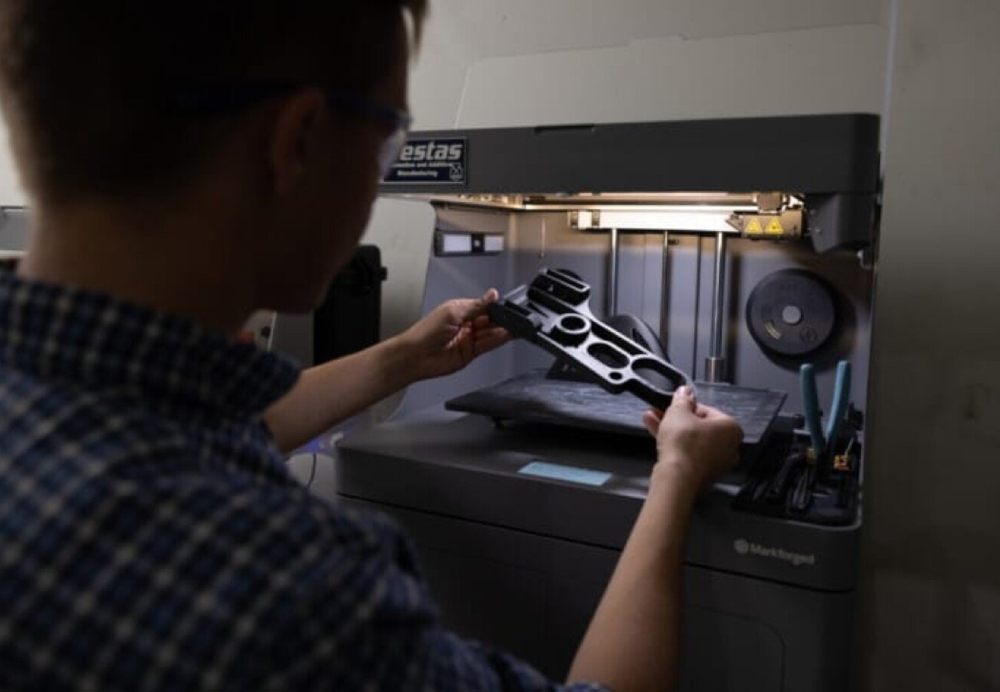With over 151 Gigawatts (GW) of wind turbines installed across 86 countries, Vestas leads the global wind energy sector, surpassing all competitors.
The Customer
Wind turbines are some of the most recognizable structures in alternative energy technology. These impressive machines stand at heights ranging from 137 to 259 meters (450 to 850 feet) and have rotor diameters from 109 to 236 meters (360 to 774 feet). Their towering presence dominates the landscape and makes them visible from miles away. Vestas produces the majority of wind turbines worldwide.
Vestas began as a family-owned manufacturer in post-World War II Denmark, initially producing hydraulic systems for light trucks. In the 1970s, it transitioned to alternative energy and built its first commercial wind turbine in 1979. Since 1989, Vestas has focused solely on wind turbine design, manufacture, installation, and service. Today, it is the largest global manufacturer of onshore and offshore wind turbines and blades, headquartered in Denmark, and has over 15 manufacturing plants worldwide.
The Challenge
Wind turbines are large and costly, requiring reliable operation with minimal downtime. Vestas uses precise inspection gauges at its manufacturing and installation sites. Previously sourced from global vendors, some locally manufactured parts did not meet specifications, resulting in delivery and installation delays.
Traditional machining methods for producing parts are time-consuming and costly. For instance, top center (TC) marking tools, essential for aligning turbine blades, took about five weeks to produce, while lightning tip receptors, designed to reduce lightning damage, required at least 12 weeks to manufacture in aluminum.
The Solution
To address these challenges, Vestas launched its Direct Digital Manufacturing (DDM) program in 2021, using Markforged’s AI-powered Digital Forge platform. This initiative reduces reliance on external suppliers and creates a centralized knowledge base. The DDM program currently includes over 2,000 Vestas parts stored in a Markforged Eiger™ cloud repository. Employees can quickly search for and print fiber-reinforced composite parts using local X7™ printers or Onyx One™ 3D printers, even without extensive additive manufacturing expertise.
“Our approach is end-to-end. We provide the physical article in near real-time to a variety of places. It’s the closest thing to teleportation I think you can get,” said Jeremy Haight, Principal Engineer for Additive Manufacturing & Advanced Concepts at Vestas.
This repository offers globally available, specification-compliant parts on demand, reducing the need for specialized manufacturing expertise and cutting manufacturing lead times, shipping, and freight costs. TC marking tools, previously produced in weeks, can now be 3D printed in days with fiber-reinforced Onyx, making them 85% lighter. Lightning tip receptors, which took 12 weeks to manufacture, can now be printed in copper locally within two days. All parts are verified for accuracy using Markforged Blacksmith™ to ensure they meet digital specifications.
“We selected Markforged because they were the most capable of providing the end-to-end solution we needed to achieve our vision of DDM,” Haight noted.
The Future
Vestas views Digital Distributed Manufacturing (DDM) as a crucial strategy for new product development and tool availability. In 2022, the company will expand DDM to include inspection gauge tooling beyond blades, enabling on-demand gauge production at all 23 manufacturing sites. Moreover, Vestas has partnered with Würth to build an additive ecosystem and maintain an inventory of spare parts created through the Digital Forge platform, supporting maintenance and repair needs in the field.
Vestas plans to implement an end-to-end process that allows users to scan a part code or search for a part in its enterprise asset management (EAM) and enterprise resource planning (ERP) systems. Requests will be automatically directed to the nearest 3D printer, while centralized management via Blacksmith and Eiger Fleet™ will ensure high-quality tools and parts. By enhancing in-house manufacturing through additive manufacturing, Vestas anticipates faster product delivery, lower costs, and significant time savings.
The Conclusion
For organizations aiming to adopt advanced technology, Vestas' use of Markforged 3D printing machines illustrates the transformative potential of additive manufacturing. These solutions improve production efficiency and reduce lead times. With support from Chemtron, a leading distributor in Asia, businesses can access essential tools, training, and technical expertise for a smooth transition. By leveraging Chemtron's insights and Markforged's capabilities, your organization can achieve notable improvements in productivity and sustainability.
Download the Free Report on How COVID-19 has Impacted Supply Chains
Gain key insights including: COVID-19 pandemic impact on business. 3D printing use during the health pandemic. Challenges facing manufacturers using incumbent technology. Future plans for investing in additive manufacturing. And more...
Get the eport